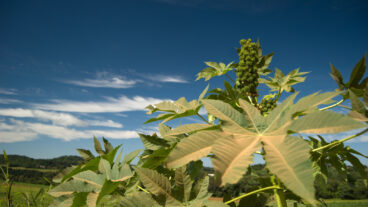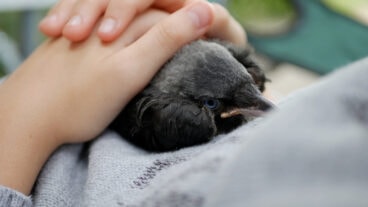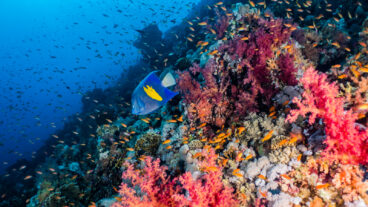An Israeli researcher has developed a ‘thermometer’ or ‘soil dipstick’ that can help diagnose the effects of global warming on the earth’s crust.
A new Optical Soil Dipstick (OSD) developed by Israeli professor Eyal Ben-Dor can forecast the health of the planet’s farms and forests, helping scientists, urban planners and farmers understand the changing health of the soil – as well as the soil’s agricultural potential and other environmental concerns.
According to climate change experts, while most people know about the melting glaciers, global warming’s effects on farming and water resources are still a mystery.
Ben-Dor, of the Department of Geography at Tel Aviv University, believes his new invention could solve this mystery. “We can finally get an accurate picture of the earth’s crust in these environmentally critical years,” explains Ben-Dor.
The OSD is a thin catheter-like device, which is inserted into a small hole in the soil to give real-time, immediately accurate and reliable information on pollution and the all-round health of the soil. Analyzing chemical and physical properties, the dipstick outputs its data to a handheld device or computer.
“It’s like a diagnostic device that measures soil health,” says Ben-Dor. “Through a small hole in the surface of the earth, we can assess what lies beneath it.”
Already the dipstick is being put to use in California, where is provides proof that organic farms are chemical-free, and it could be used as a whistle-blower to catch environmental industrial polluters.
Testing for soil health in the field
And as climate change alters our planet radically, Ben-Dor believes that this dipstick could instantly tell geographers which parts of the US are best – or worst – for farming.
Today, there is no simple and inexpensive way to test for soil health in the field. Soil maps of individual states are only compiled every 10 or 20 years, and each one costs millions. One testing process even requires the use of a bulldozer, which dredges up large tracts of land to be sampled and analyzed in a laboratory.
Testing is much simpler with Ben-Dor’s dipstick, which can even be used by non-professionals. “To optimize production and save costs, farmers need to know if their crops are getting the right blend of minerals. This tool could permit them to pursue ‘precision agriculture,'” says Ben-Dor.
The OSD, which is expected to cost about $10,000 per unit per application, allows technicians to determine if the soil needs water or is contaminated.
It also provides information about the condition of root zones where crops are growing. And the quality of information, the researchers explain, is identical to that provided by large government laboratories.
Ben-Dor, who began developing the device because of his interest in drug development and diagnostics, says that these dipsticks can also be remotely and wirelessly networked to airplanes and satellites, providing the most detailed, comprehensive and reliable soil maps.
Helping map the effects of climate change
The efficacy of his OSD was recently reported on in the Soil Science Society of America Journal.
Currently in the prototype stage, the OSD is set for commercialization. Once the right strategic partner is found, the device could be on the shelves, and in the ground, within a year.
Soil maps are important tools of the trade for land developers, city planners, farmers and environmental prosecutors. Those employed today tend to be outdated, rendering them useless for many applications, and only about 30% of the planet has been mapped in this way.
Soil maps for the Far East, the Arctic and Africa, which can be more readily developed with the OSD, will better tell scientists, researchers and government agencies how climate change and population growth are affecting our planet and its resources.
“Soil mapping is a national undertaking,” Ben-Dor observes. “It takes years and millions of dollars worth of manual labor and laboratory analysis, not to mention exhausting headaches with government authorities and ministries.
“For a fraction of that energy and money, and with a staff that has minimal training, the OSD could do the same job, and could continue doing it on a yearly, monthly, and possibly even a daily basis. The headaches would be gone, and we would finally get an accurate picture of the earth’s crust,” he concludes.











